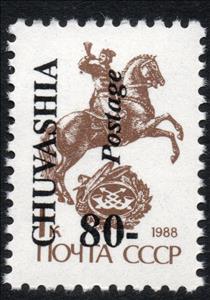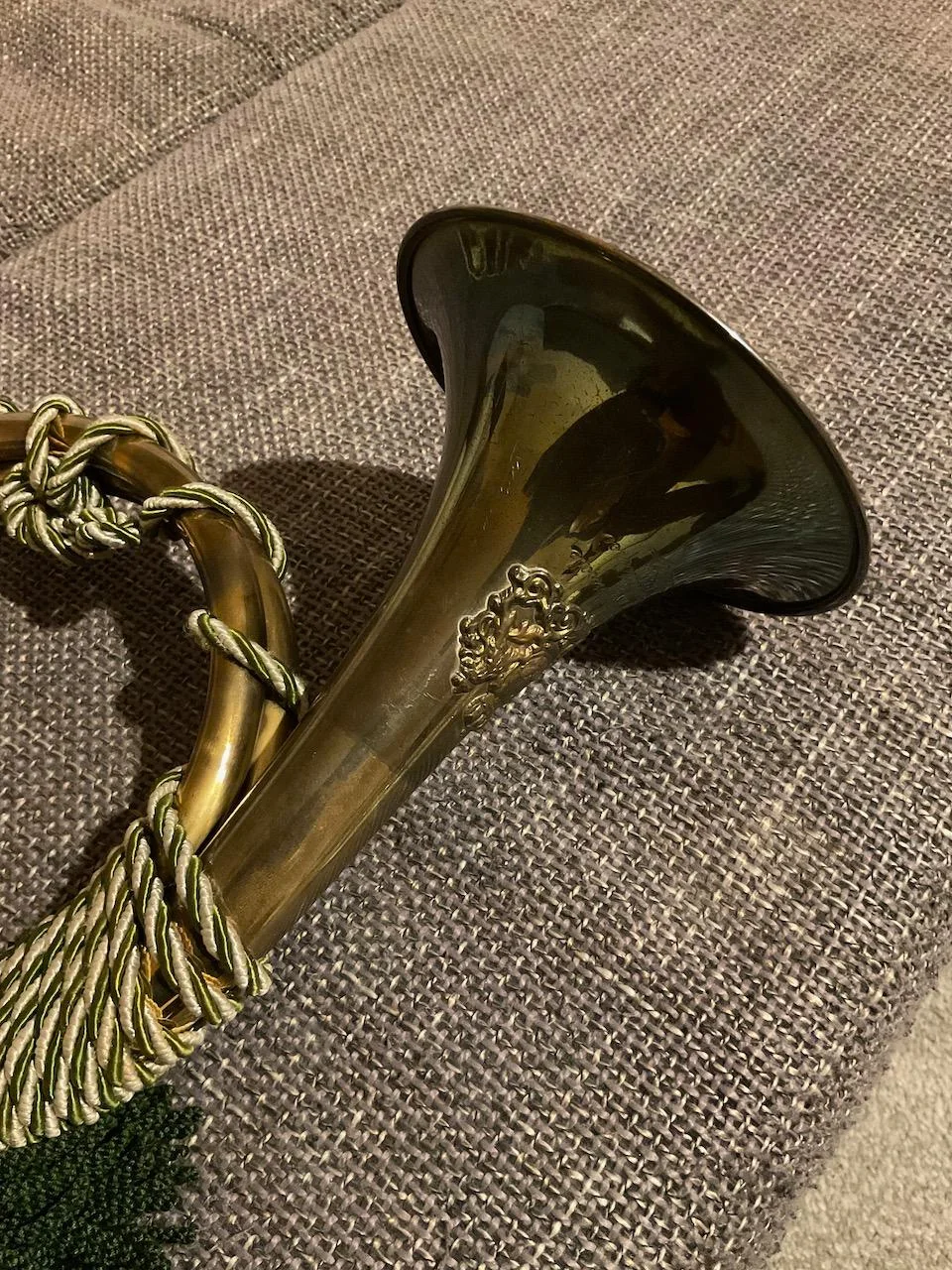Stamp: Emergency issue (Cinderellas 1993)
Emergency issue (Cinderellas 1993)
01 January (Cinderellas ) within release Chuvashia, Russia goes into circulation Stamp Emergency issue face value 80 Russian ruble
| Stamp Emergency issue in catalogues | |
|---|---|
| Colnect codes: | Col: CH 1993-01/9 |
Stamp is vertical format.
Black overprint on 1k 1988 USSR stampAlso in the issue Chuvashia, Russia:
- Stamp - Emergency issue face value 80;
- Stamp - Emergency issue face value 35;
- Stamp - Emergency issue face value 70;
- Stamp - Emergency issue face value 45;
- Stamp - Emergency issue face value 50;
- Stamp - Emergency issue face value 45;
- Stamp - Emergency issue face value 50;
- Stamp - Emergency issue face value 25;
- Stamp - Emergency issue face value 70;
- Stamp - Emergency issue face value 3;
- Stamp - Emergency issue face value 60;
- Stamp - Emergency issue face value 80;
- Stamp - Emergency issue face value 95;
- Stamp - Emergency issue face value 95;
- Stamp - Emergency issue face value 60;
- Stamp - Emergency Overprints face value 80;
- Stamp - Emergency issue face value 80;
- Stamp - Emergency issue face value 25;
- Stamp - Emergency issue face value 15;
- Stamp - Emergency issue face value 3;
- Stamp - Emergency issue face value 60;
- Stamp - Emergency issue face value 45;
- Stamp - Emergency issue face value 15;
- Stamp - Emergency issue face value 70;
- Stamp - Emergency issue face value 15;
- Stamp - Emergency issue face value 3;
- Stamp - Emergency issue face value 25;
- Stamp - Emergency issue face value 35;
- Stamp - Emergency issue face value 35;
- Stamp - Emergency issue face value 50;
Stamp Emergency issue it reflects the thematic directions:
A horn is a permanent pointed projection on the head of various animals that consists of a covering of keratin and other proteins surrounding a core of live bone. Horns are distinct from antlers, which are not permanent. In mammals, true horns are found mainly among the ruminant artiodactyls,[not verified in body] in the families Antilocapridae (pronghorn) and Bovidae (cattle, goats, antelope etc.). Cattle horns arise from subcutaneous connective tissue (under the scalp) and later fuse to the underlying frontal bone.
The horse (Equus ferus caballus) is one of two extant subspecies of Equus ferus. It is an odd-toed ungulate mammal belonging to the taxonomic family Equidae. The horse has evolved over the past 45 to 55 million years from a small multi-toed creature, Eohippus, into the large, single-toed animal of today. Humans began to domesticate horses around 4000 BC, and their domestication is believed to have been widespread by 3000 BC. Horses in the subspecies caballus are domesticated, although some domesticated populations live in the wild as feral horses. These feral populations are not true wild horses, as this term is used to describe horses that have never been domesticated, such as the endangered Przewalski's horse, a separate subspecies, and the only remaining true wild horse. There is an extensive, specialized vocabulary used to describe equine-related concepts, covering everything from anatomy to life stages, size, colors, markings, breeds, locomotion, and behavior.
The post horn is a valveless cylindrical brass instrument with a cupped mouthpiece. The instrument was used to signal the arrival or departure of a post rider or mail coach. It was used by postilions of the 18th and 19th centuries.
The mail or post is a system for physically transporting documents and other small packages; or, the postcards, letters, and parcels themselves. A postal service can be private or public, though many governments place restrictions on private systems. Since the mid-19th century national postal systems have generally been established as government monopolies with a fee on the article prepaid. Proof of payment is often in the form of adhesive postage stamps, but postage meters are also used for bulk mailing. Modern private postal systems are typically distinguished from national postal agencies by the names "courier" or "delivery service". Postal authorities often have functions other than transporting letters. In some countries, a postal, telegraph and telephone (PTT) service oversees the postal system, in addition to telephone and telegraph systems. Some countries' postal systems allow for savings accounts and handle applications for passports.




